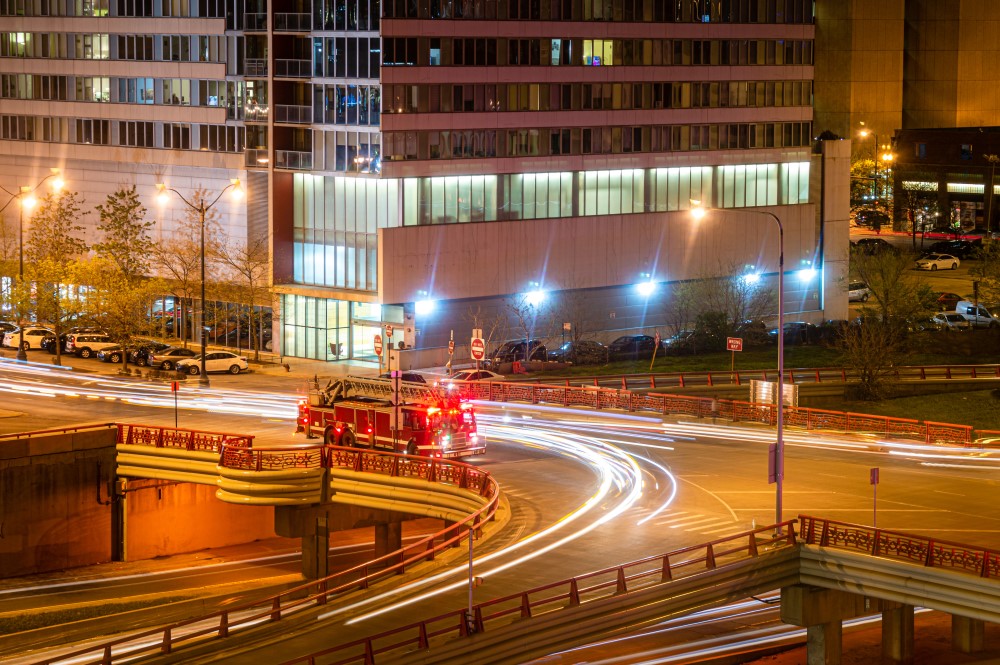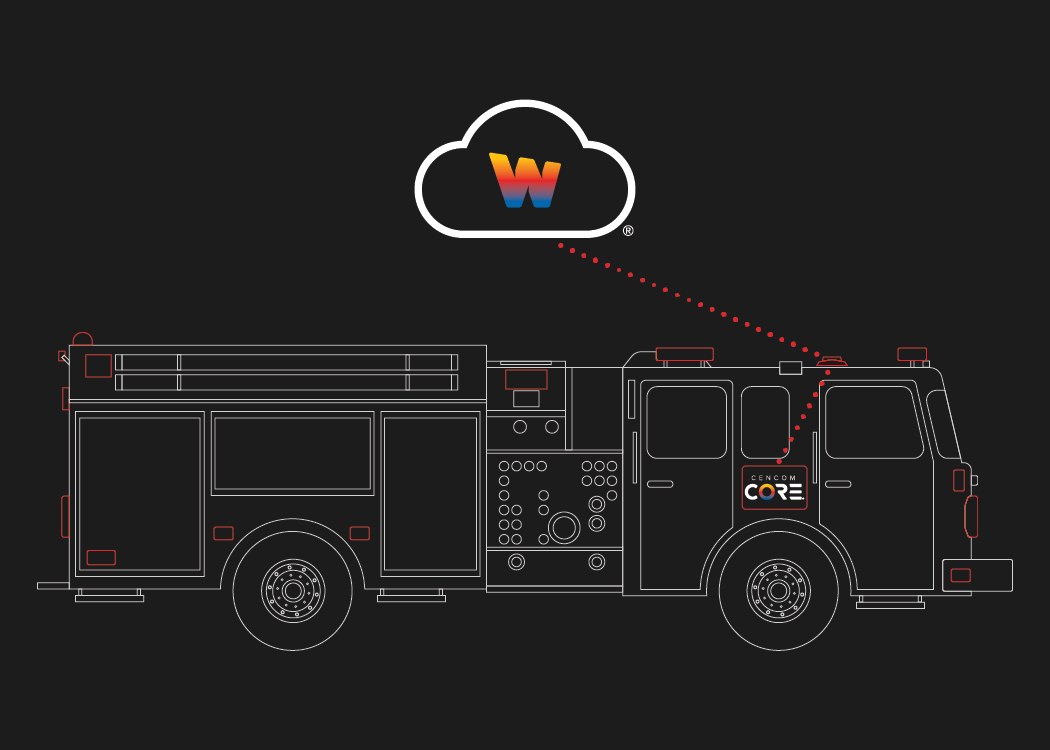New Technology Is Clearing the Way for Improved Safety When Responding to Emergencies
This article was first published in the March 2023 edition of Fire Apparatus & Emergency Equipment.
By Christopher Watkins
Advancing first responder safety is at the forefront of all suppliers within the fire apparatus and emergency equipment industry. It’s a critical mission in both warning and illumination. Every new feature, widget, and innovation that comes out is designed to further enhance the safety of both the motoring public and first responders
As emergency scenes are made safer with the latest technology and improved product features, suppliers are beginning to take a bigger picture approach to scene safety. It no longer includes just what’s happening on scene; we are now looking at the moments involved in getting first responders to the scene. We’re asking questions like, “How do first responders interact with
each other when en route to an emergency?” and “How do first responders interact with the apparatus and other drivers on the road when responding to a call?” We’re asking questions that go beyond traditional visual and audible alerting to uncover new ways to make emergency responses even safer for first responders and everyone else on the road too.
On the technology side, most of us are familiar with “the cloud.” Historically, its primary use for the emergency market was to provide access to information and help fleet managers understand and better manage their apparatus. Telematics, a fancy word used to describe fleet management software that offers a comprehensive view of vehicles and aids in operational efficiency, has been in use since the 1960s. Its adoption into our industry began in the early 2000s and is a commonly found feature in apparatus today and will soon reach the tipping point of becoming a standard
part of builds.

As this happens and the connectivity of our market increases, suppliers are using this readily available technology to improve safety in new and innovative ways. Currently, the latest advancements in cloud-connected safety mean it’s now possible for fleets around the country to digitally alert motorists to their presence, incorporate responder-to-responder alerting, as
well as control and direct traffic signal priority at intersections, otherwise known as emergency vehicle preemption (EVP).
While every new safety feature is important, that last one on the list, EVP, is a huge deal because we all know that approaching an intersection is one of the most precarious moments first responders face when responding to a call. They are navigating not only the motoring public but other apparatus rushing to the scene as well. Emergency vehicles approaching the same intersection from multiple directions creates an extremely challenging situation. With the latest technology enabled, the driver of each responding vehicle receives a notification that another emergency vehicle is approaching the intersection at the same time, alerting first responders to take extra precautions when clearing the intersection.
Today, through products like Whelen Engineering’s Vehicle Safety Gateway (VSG) and the company’s partnership with Global Traffic Technologies (GTT), intersections can now interact with apparatus by using enhanced precision and GPS data through the Whelen Cloud Platform®, which directly links the apparatus to an intersection. The earlier issue of range limitation no longer applies, as the cloud can communicate directly to the signal from any distance. This new, centralized technology is not dependent on a line of sight to the intersection either, so it’s equally effective around corners.
The granularity and fine-tuning of a fleet’s interaction with an intersection becomes much more robust as it is controlled by hardware that interacts with the cloud. First responders and fleet managers no longer need to rely on dated hardware mounted on the apparatus or intersections that require routine maintenance to ensure receivers are tuned accordingly. This new technology and partnership allow first responders to get to emergency scenes more safely than ever before while providing peace of mind that wasn’t possible even a few years ago.
To explain it further, let’s look at a common scenario and talk about how traditional hardware reacts vs. the new, cloud-control software.
Scenario 1: “Emitter” Technology
An apparatus approaches an intersection that is located within a turn. The apparatus is outside of the range of infrared preemption, so the signal does not receive the preemption request until the vehicle has turned the corner and is now headed directly toward the signal. This leaves little time for the preemption to be granted and for the signal to clear, so the first responder must slow down or stop to proceed through the intersection safely. This results in delayed response times and the apparatus does not get to the emergency as quickly as possible.
Scenario 2: “Cloud” Technology
An apparatus approaches an intersection that is located within a turn. Immediately on switching the apparatus into response mode, and even before approaching the intersection, the signal
starts to calculate the apparatus’ estimated time of arrival (ETA) using GPS data based on direction and speed. Once an ETA is determined, and once the vehicle has met the ETA or distance parameter that is set by the department, a green light is automatically requested, and the apparatus clears the intersection safely and quickly. With no range limit or sightline requirements, the technology’s ability to preempt around corners and utilize second-by-second GPS data offers a significant improvement in navigating intersections safely and efficiently.

Digital Alerting, offered through HAAS Alert’s Safety Cloud®, is another way technology is improving emergency scene safety by notifying the motoring public and fellow responders that an apparatus is nearby. With first responders, the driver of each responding vehicle receives a notification that another emergency vehicle is approaching the intersection at the
same time, alerting them to take extra precautions when clearing the intersection. When an apparatus is in motion and connected to the cloud service, alerts can also be pushed to the motoring public around it through phone navigation applications like Waze and Apple maps. Notifications like “Emergency Vehicle Approaching” and “Emergency Vehicle Ahead, Please Slow Down and Move Over” are examples of what a driver may see. HAAS Alert says its technology can reduce the risk of collisions by 90%. Some vehicle manufacturers, including Jeep, Chrysler, Dodge, and Ram,
are designing their own infotainment systems to receive these alerts. This means drivers will receive notifications even when not using a navigation app.
If you’re thinking about enhancing the safety of your fleet or want to learn more about how the newest technology is making it safer to get to emergency scenes as well as increasing safety on scene, reach out to your trusted supplier or manufacturer to talk about the new advancements. Technology is changing rapidly, and we’re doing all we can to make it as safe as possible for first responders and everyone on the road.
CHRISTOPHER WATKINS is a Clermont, Florida-based field solutions engineer for Whelen Engineering, Inc. Prior to his current position, Watkins was an authorized managing sales representative territory representative for Whelen for several years. He has 26 years of experience in the automotive electronics and fabrication industry.



